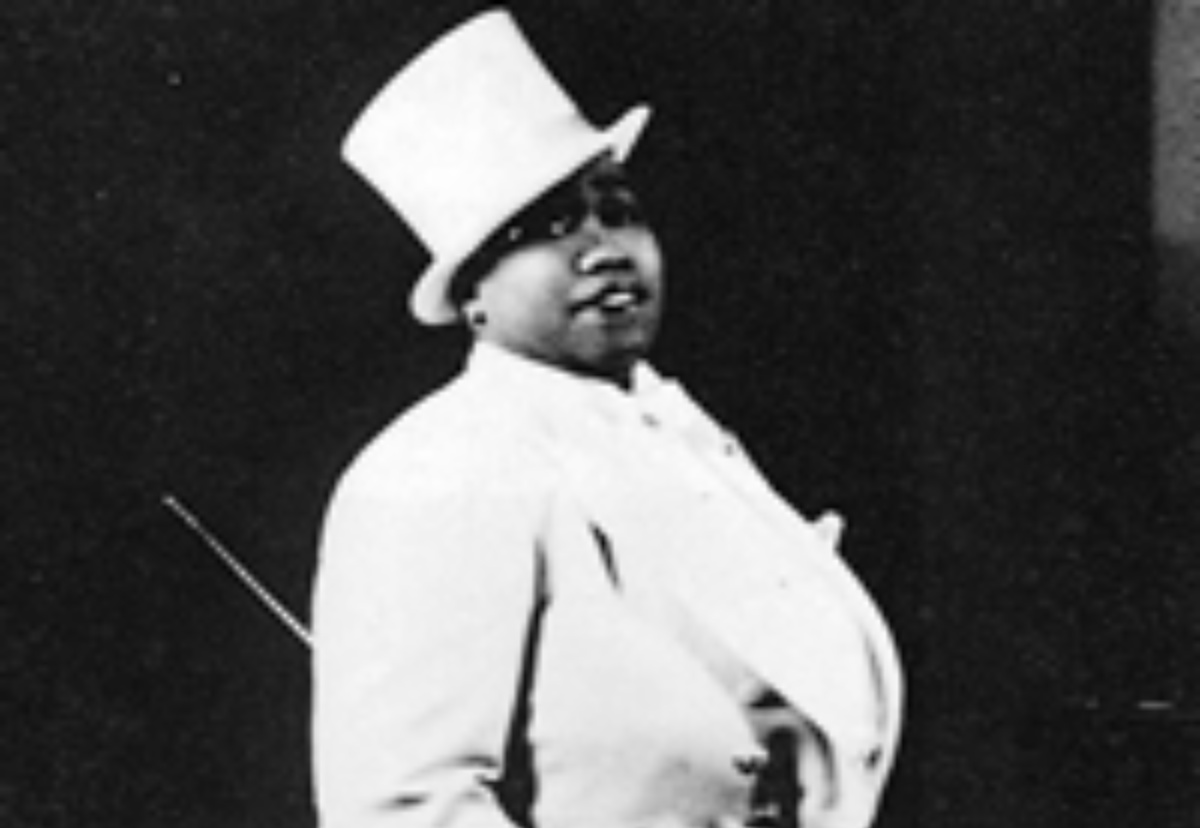Gladys Bentley, the Cross-Dressing Lesbian Who Rocked the Harlem Renaissance

Happy Black History Month! For each of the 28 days of February, we at The Mary Sue will have a post about a black woman you should know about—some you may have heard of, some a little bit more obscure, and some fictional who still deserve a lot of love.
Day Twenty-Two: Gladys Bentley
For those podcast junkies out there, I would highly recommend the podcast “American History Tellers” which had a great series on the Cold War and is now doing an epic multi-part series on Prohibition. In its most recent episode, “Speakeasy,” they mention the Harlem Renaissance and the clubs that sprang up in New York City because of it. The narrator briefly mentions Gladys Bentley, a cross-dressing Jazz singer who was openly a lesbian. So immediately I thought: I want to write about this woman.
Gladys Bentley was born in 1907’s Philadelphia to a dysfunctional household where she had a distant relationship with her mother. At the age of 16, she moved to New York. Like something out of a movie, she managed to impress a Broadway agent right away, recorded eight tracks, and received a $400 check.
Gladys got her big break working at Harry Hansberry’s Clam House on 133rd Street, which at the time was one of the biggest gay speakeasies in New York City. They were looking for a male pianist, and that is when Bentley began dressing in full male garb: white dress shirts, stiff collars, small bow ties, oxfords, short Eton jackets, and her hair cut straight back. Through working there she was able to become popular as an artist.
She began making a salary of $35 per week plus tips that quickly went up to $125 per week. When she began working at the Ubangi Club on Park Avenue, Gladys made enough to be able to afford a $300 monthly apartment on Park Ave. While living there she was rumored to have her girlfriend there as well. Bentley was very open about her sexuality, performing at lesbian bars, and she once told a gossip columnist she had married a white woman while in Atlantic City, New Jersey.
Contrary to narratives of black people and their interaction with people of color, many queer black writers and performers existed during the Harlem Renaissance. In addition to Gladys Bentley, there were Langston Hughes, “Ma” Rainey, and Bessie Smith among others. Henry Louis Gates Jr. once said that the Harlem Renaissance was “was surely as gay as it was black.”
Bentley was a talented singer and comedian who took great pleasure in her innuendo-laced songs and comedy, where she bragged about her female lovers and even flirted with women in the audience.
Sadly, after the decline of the Harlem speakeasies due to the repeal of Prohibition, she relocated to southern California, but did not achieve as much success as she had had in the past.
Probably due to the more conservative nature of the world post-Harlem Renaissance, Gladys tried to “fix” herself, saying that she was no longer attracted to women. However, many believe this to have been a way of deflecting any discrimination or homophobia that she may have experienced outside of Harlem.
Bentley died of pneumonia in Los Angeles in 1960, aged 52.
Recommended Reading
Bulldaggers, Pansies, and Chocolate Babies: Performance, Race, and Sexuality in the Harlem Renaissance (Triangulations: Lesbian/Gay/Queer Theater/Drama/Performance) by James F. Wilson
Gay Voices of the Harlem Renaissance (Blacks in the Diaspora) by A.B. Christa Schwarz
The Scene of Harlem Cabaret: Race, Sexuality, Performance by Shane Vogel
(image: Public Domain)
Want more stories like this? Become a subscriber and support the site!
—The Mary Sue has a strict comment policy that forbids, but is not limited to, personal insults toward anyone, hate speech, and trolling.—
Have a tip we should know? tips@themarysue.com